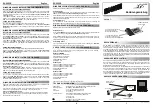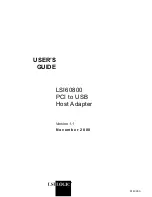
•
For 4 Gb/s and 2 Gb/s SAN fabric switches, avoid transitions to soft zoning in a hardware-
nl
enforced zoning environment.
B-series Fibre Channel switches allow a maximum of 64 SID entries for each quad. If you exceed
this limit, the affected ports transition from hard to soft enforcement. Although the switch logs display
warning messages, data integrity is preserved during this transition.
•
Maintain data access as defined in your SAN design, but avoid configuring hosts and targets on
the same quad.
•
Configure each quad with members of the same zone. Avoid configuring members of different
zones on the same quad. For example, configure UNIX zone members on one quad and Windows
members on a different quad.
•
Minimize zone entries by including only hosts and targets that communicate. For example, rather
than combine all hosts of the same OS type into one zone, make smaller zones with only hosts
and targets that need to communicate.
•
Use the
portzoneshow
command to display and verify the zoning status of each port.
The
portzoneshow
command displays the status of each port:
•
Hard
—Hardware enforcement
•
Soft
—Name server and ASIC-assisted authentication
•
All
—No zoning enforcement
Zoning guidelines
The following messages indicate that a port has changed to soft zoning:
WARNING ZONE-ZONEGROUPADDFAIL, 3, WARNING - port 7 Out of CAM entries
WARNING ZONE-SOFTZONING, 3, WARNING - port 7: zoning enforcement changed
to SOFT
The zoning configuration has exceeded limits, forcing the specified port to change from
hardware-enforced zoning to software-enforced zoning. Other zone members remain hardware
enforced. These warning messages appear at zoning configuration time (for port-level zoning) or
dynamically at run time (for WWN zoning).
Primary management switch recommendations (B-series Fibre Channel switches)
Recommendations for primary management switches follow:
•
Designate one switch in the fabric as the primary management switch and use it for all management
and control, including zoning, Time Services, Fabric Manager, and WebTools. Using one switch
for access prevents multiple administrators from making changes to switches in the fabric at the
same time. If you have a core-edge topology, HP recommends you use a core switch as the primary
management switch. Typically, a core switch is connected directly to all other switches in a core-
edge fabric, providing optimal communication. In SANs with mixed Fabric OS, these functions
must only be executed from a switch running the highest Fabric OS. For example, if a SAN contains
switches running Fabric OS 3.
x
and switches running Fabric OS 5.
x
, these functions must be
nl
executed from a switch running Fabric OS 5.
x
.
•
Configure the primary management switch in the fabric as the preferred principal switch by using
the
fabricprincipal
command.
•
How a principal switch is assigned can vary in a fabric. That assignment depends on the state of
the fabric, the switch WWN, and whether other switches or fabrics merge with that fabric. The
principal switch in a fabric may not remain a principal switch once new switches are added to
the original fabric or the original fabric is reconfigured. The Fibre Channel standards alone specify
the mechanisms to implement the
fabricprincipal
command. These mechanisms allow a
preference for a switch that requests to be the principal switch in a fabric. However, they do not
SAN Design Reference Guide
129
Summary of Contents for StorageWorks 4000/6000/8000 - Enterprise Virtual Arrays
Page 26: ......
Page 34: ...SAN design overview 34 ...
Page 60: ...SAN fabric topologies 60 ...
Page 80: ...Fibre Channel routing 80 ...
Page 82: ......
Page 92: ...H series switches and fabric rules 92 ...
Page 156: ...C series switches and fabric rules 156 ...
Page 182: ...SAN fabric connectivity and switch interoperability rules 182 ...
Page 184: ......
Page 270: ...XP and VA storage system rules 270 ...
Page 276: ...Enterprise Backup Solution 276 ...
Page 278: ......
Page 354: ...SAN extension 354 ...
Page 398: ...Network Attached Storage 398 ...
Page 400: ......
Page 416: ...Storage security 416 ...
Page 428: ...Best practices 428 ...
Page 456: ...456 ...
















































